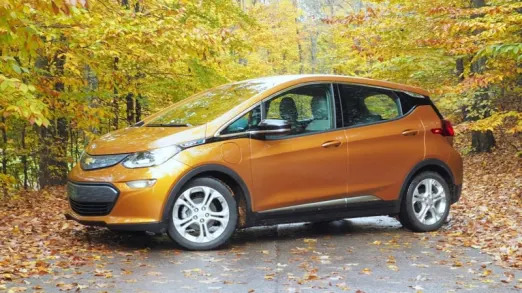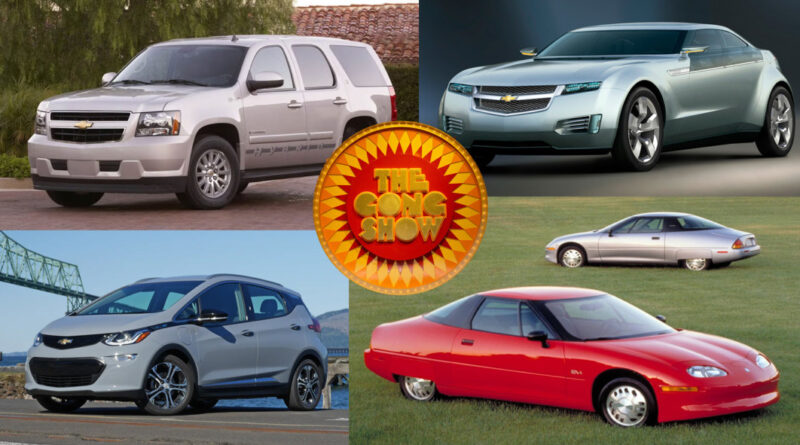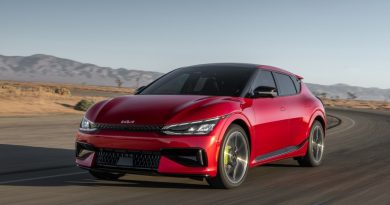GM’s electrification efforts have been a total gong show
EVs are terrific and they may very well be the future, but given the infrastructure challenges of both public and at-home charging, they are not realistic for a great many at this time. Their high costs also represent an iffy financial decision when you start running the numbers on EVs versus comparably sized hybrids and plug-in hybrids: yes, you’ll save money by running on electricity, but probably not enough to counter the much higher cost of entry.
Because of both the infrastructure and financial challenges, hybrids and plug-in hybrids are an obvious bridge technology to the full EV future. This was obvious years ago and it’s obvious today. And yet, car companies mostly eschewed hybrids and plug-in hybrids in favor of a full EV push. Why? Electric cars are REALLY expensive to develop. Investing in a bridge technology at the same time as the ultimate goal … well, speaking of iffy financial decisions.
As such, the only companies really making hybrids these days are those who were making them before the recent EV push: Toyota/Lexus, Honda, Ford, Hyundai/Kia, BMW and Porsche. The company formerly known as Chrysler is the rare exception to this as it has more recently invested in and introduced new plug-in hybrids.
One company not listed there, of course, is General Motors. It dove head-on into electric and swore off hybrids apart from the recently introduced Corvette E-Ray. GM, however, not only had hybrid technology, it had exceptional hybrid technology. The Chevrolet Volt came out in 2010, and while the car itself was flawed, the powertrain and its general concept were exceptional. The non-plug-in version of the Voltec hybrid powertrain was also very good, but it wound up in virtually nothing. I’m one of only a handful of journalists who ever tested a 2016 Chevy Malibu Hybrid, and you know what? It was really good!
That was the most perplexing thing about GM’s decision several years ago to move beyond hybrids. How could it not see that EVs were not going to be for everyone? How could it not see the short-sightedness of the decision? Those were questions myself and many others covering the automotive industry were asking back then. And it’s why I have nothing to say but “well, duh” when GM recently announced it was throttling back on EV development and dusting off their hybrid tech from the vault.
This is just the latest example of General Motors completely bungling its electrification strategy. The engineers have done their jobs over the years, but the combination of mistakes, miscalculations and missed designs by everyone else has rendered those efforts pointless.


In the beginning, General Motors came up with the first electric car in basically a century. Then they killed it … both the EV1 and the general idea of producing an electric car.
A decade later, General Motors effectively invented the plug-in hybrid, the Chevrolet Volt. Its 40 miles of electric range would still be among the best on sale today, and the well-executed powertrain’s overall concept had the same benefits as modern PHEVs: Run on electricity for your commuting and daily errand running, have the gas engine on hand for longer trips. It worked and it worked well. Good job engineers! However …
As cool as the original Volt concept was (picture above), the eventual production model was decidedly not, disappointing everyone. It was also cramped with four seats only, thereby limiting its widespread appeal. The second generation was better-looking and more conventional, but that also meant it wasn’t able to declare its greenness to the world. Both further suffered from minimal marketing support and dealers uninterested in selling something more complicated than “V8 makes truck go.”
Meanwhile, the only other vehicle the Voltec plug-in powertrain found itself in was the Cadillac ELR, a tiny two-door coupe with a price tag so outrageously high we all thought it was a joke (OK, so there was also the Fisker Karma. There was eventually a more compelling Cadillac CT6 plug-in hybrid capable of 31 miles of e-range, but it was on sale for roughly 28 minutes before GM axed it. Come to think of it, GM also axed the CT6’s almost-mythical “Blackwing” engine option, so it’s not like curious about-faces are limited to the electric realm.)


Hindsight is 20/20, of course, but it always seemed like Voltec could be a winner – it just needed the right kind of vehicle surrounding it as well as marketing support. An Equinox-sized SUV with Voltec and unique styling seemed like a recipe for at least greater success than the Volt, even if it would need a bigger battery. The demand for the Toyota RAV4 Prime and Kia Sportage PHEV would indicate it wouldn’t have been foolhardy.
Eventually, GM pulled the plug on the Volt, plug-in hybrids and regular hybrids, such as the Malibu, that effectively had the Voltec powertrain concept with smaller batteries and no electric-only range. They basically operated like Honda’s system. I suppose that’s what they can bring out from mothballs now, so they’re certainly restarting from a good spot.
But let’s also not forget that GM co-developed a hybrid system for its full-size trucks and SUVs, and although a bit underbaked as an overall concept, it was still something to build upon. GM could very well have a Silverado/Sierra answer to Ford’s excellent F-150 Power Boost hybrid today, but nope.


And that’s just hybrids. Let’s talk about the actual EVs. The Bolt was the first affordable EV that didn’t make you bite your nails with range anxiety the second you pulled out of the driveway. While the Leaf and E-Golf and yada yada yada all had ranges in the 100-mile vicinity, the Bolt blew them all away with about 250. It was also quick and reasonably fun to drive. Unfortunately, it was a tall, awkwardly styled dorkmobile of a hatchback that only the most ardent EV evangelists would desire. Dealers hated it even more than the Volt ‘cause they couldn’t charge you an arm and a leg for oil changes, etc. A successful refresh largely corrected the dorky styling and the stretched EUV version satisfied the needs of more family-oriented customers. With a big help from lower prices, the Bolt found finally found success. And then GM killed it.
To be fair, the Ultium platform shows great promise. It’s more advanced and allows for the mixing and matching of components to make various vehicles for various brands, including Honda and Acura. Unfortunately, there will be a gap between the Bolt and whenever its next-generation, Ultium-based replacement arrives. And also whenever the cheapest Equinox EV arrives. That’ll leave potential customers with nothing.
And speaking of nothing, that’s been a half-decent estimate for how many other Ultium-based vehicles have been produced. The Hummer EV and Cadillac Lyriq have been trickling out, while the Blazer EV fell flat on its face the second it jumped over the boards. Even then, Chevy was delaying the rollout of its various trim levels, with pricier ones coming first and cheaper ones coming in 2020-something or other. Honda to its credit is not doing that with the mechanically related Prologue.
At some point in that history lesson, I probably should’ve suggested putting on circus music or “Yakety Sax.” Or banging a gong. Or dropping a gif of Captain Picard putting his forehead into his palm. It’s just been a mess. So much promise utterly wasted. One almost expects some sort of calamity or poor decision to befall the Corvette E-Ray any day now.
And yet! GM can still salvage this snowball of mismanagement. Even with Voltec covered in dust and Ultium firing out error codes like a Gatling gun, they’re in a vastly superior position to that of other car companies. It’s easy to see a very promising future filled with compelling plug-in hybrid SUVs, hybrid trucks and, yes, all the wonderful EVs we’ve already gotten a glimpse of. Can GM actually get out of its own way and make it happen? Well, that is the question, isn’t it?




